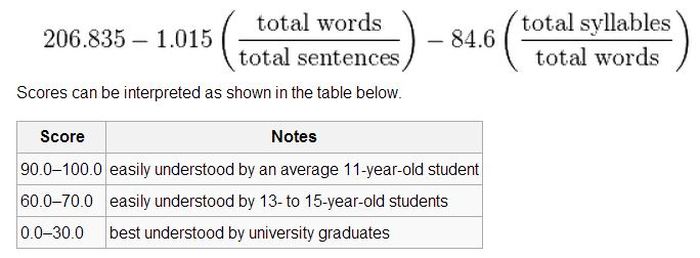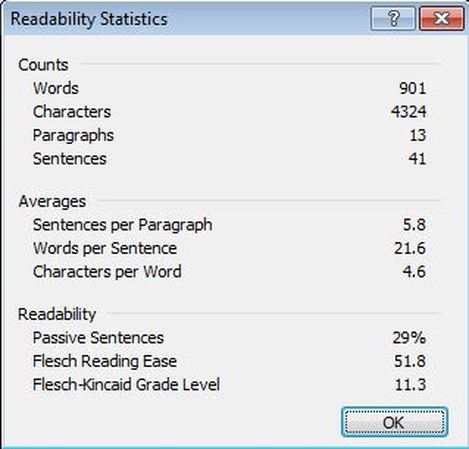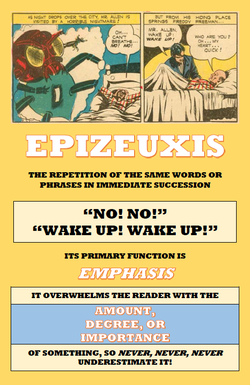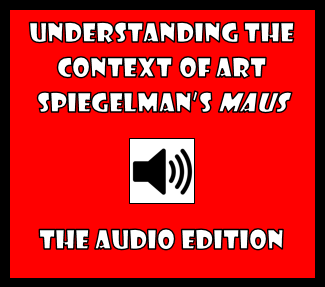|
by Glen Downey, Comics in Education, www.comicsineducation.com The Flesch-Kincaid Scoring SystemI was thinking the other day about whether those who write comics and graphic novels for the trade market consider the demographics of their intended audience--not in terms of the appropriateness of the content of what they are writing, but in terms of the language they are using. Often when teachers want to use a graphic novel that was not specifically designed for the classroom--like Persepolis, Maus, or Watchmen--they are not initially sure whether their students will be able to make sense of it (i.e. whether it's of an appropriate grade level for their students in terms of the issues it address or its use of language). This got me thinking about whether there would be a good resource to talk about in this blog that all teachers and all writers should consider using when respectively teaching and writing. Fortunately, there is, and the resource is closer than you think! It's called the Flesch-Kincaid Readability Test and it's what every educational publisher knows when putting together any kind of book for the classroom, including leveled comics and graphic novels. What the test amounts to is a pair of equations that can analyze both the readability of a given text and its associated grade level. Here are the snippets courtesy of the one website I could find with a very readable presentation of the two tests: Wikipedia! Reading Ease TestGrade Level TestWhat are the implications for teachers and writers? Well, those writing in any genre can check the basic readability of the physical language structures in their prose by using the Proofing tab under Options in Microsoft Word. The hyperlink above takes you to Microsoft's site. The reason very few people use this function, however, is that it is defaulted to "off" in Word. You need to check a box called "Check Readability Statistics" in order to turn it on. Then you'll be able to see something like this: when you spell check a document. If you write comics or graphic novels, it's a bit more challenging to use the feature. You have to include on a Word page just your dialogue. Otherwise, the reading will be skewed. It's an especially valuable tool for those who want to write for the educational publishing industry, though, since it can ensure that the physical structure of the writer's prose is not way over the heads of the intended audience. In the above example, it is indicating that a student in Grade 11 lshould be able to understand the document on a first reading. Numbers over 12 indicate that a student would generally need to have a postsecondary education to ensure their understanding of the language structures.
For teachers, there are very practical uses for this. Have your students check the grade level of their writing. Are they in Grade 12, but the Flesch-Kincaid readability test is saying that the student is writing at a Grade 4 level? It might be the case that there is a lot of dialogue in the student's text--which tends to generate lower scores--or that the student uses a number of short, monosyllabic sentences. Is your student in Grade 4 and writing at a Grade 12 level. It might be that they are constructing run-on after run-on and aren't sure where to put the period! Okay, now I've shown you the resource. See if it can work for you!
1 Comment
10/21/2014 01:18:45 pm
Is there a way to ascertain the results of the Flesch-Kincaid Readability Test on already published works without typing the entire thing into Microsoft Word? Thanks.
Reply
Your comment will be posted after it is approved.
Leave a Reply. |
Glen DowneyDr. Glen Downey is an award-winning children's author, educator, and academic from Oakville, Ontario. He works as a children's writer for Rubicon Publishing, a reviewer for PW Comics World, an editor for the Sequart Organization, and serves as the Chair of English and Drama at The York School in Toronto. If you've found this site useful and would like to donate to Comics in Education, we'd really appreciate the support!
Archives
February 2019
|






 RSS Feed
RSS Feed
